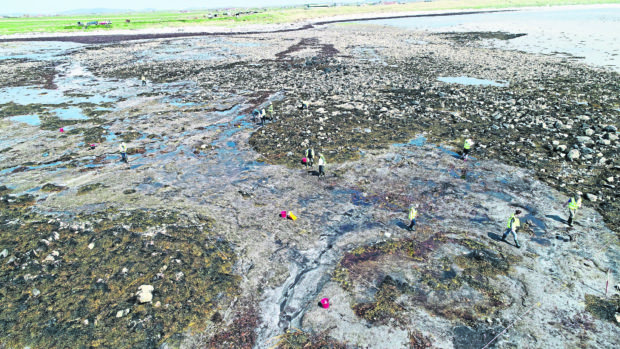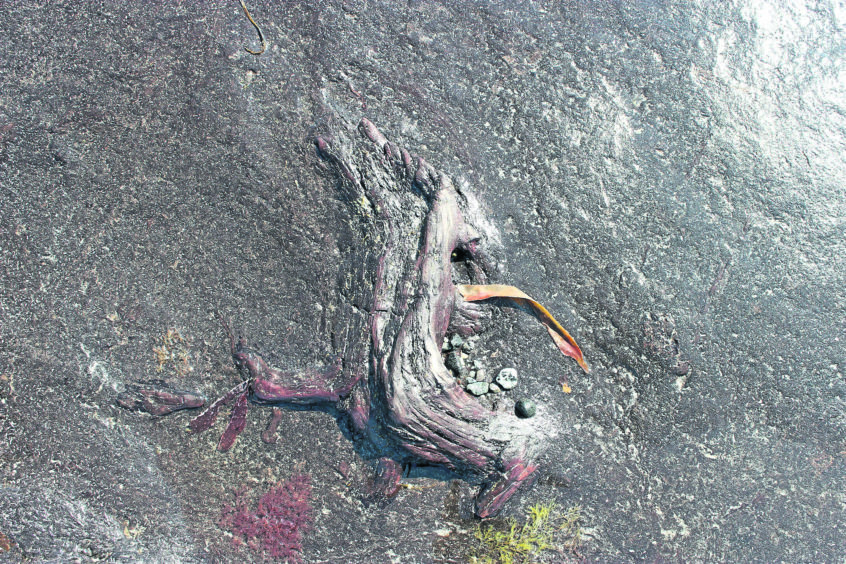Archaeologists have found evidence of “incredibly rare” early human activity at a submerged prehistoric forest in the Outer Hebrides.
The time detectives say the site is around 3500 years old.
Work on discovering it is still continuing – particularly over carbon dating the finds more precisely.
But they are “very excited” by the discovery.
>> Keep up to date with the latest news with The P&J newsletter
Lionacleit in Benbecula is one of more than 20 recorded sites of ancient woodland that once grew in the islands.
The remains included an early butchery site and stone tools used for preparing food.
Archaeologists have described the discoveries at Lionacleit as “extra special”.
They found the remains of the area where animals had been butchered for food during studies of the site last year.
Bone was also found with a piece of quartz from a stone tool and a quern stone, which was used for grinding food.
The Scottish Coastal Archaeology and the Problem of Erosion (Scape) Trust, a charity that works out of the University of St Andrews, was alerted to the remains by local resident Ann Corrrance Monk.
Joanna Hambly, a research fellow at Scape, said: “An unexpected discovery during the fieldwork was the realisation that archaeological remains survived in the intertidal zone. We are very excited by the finds.
“These include a wall, the possible remains of sub-circular stone structures which could be houses, a quern stone and butchered animal bone associated with struck quartz tools.
“To find the remains of a butchery site is incredibly rare – the survival of a single action in prehistory preserved in intertidal peats.”
Dr Hambly, thanked in particular Kevin Murphy of the Western Isles Archaeology Service for his help on the project, and added: “These remains are all much closer to the beach than the forest, and are almost certainly much later in date.
“We don’t know how old they are yet, but have submitted samples for radiocarbon dating.”
The sub-fossil trees at Lionacleit are the remnants of woodland that was once widespread across the Western Isles. Sub-fossils are matter that has been partially rather than fully fossilised.
Scape said the forest was at its peak about 10,000 to 7,000 years ago and was a rich mix of birch, hazel, willow, aspen, rowan, oak, Scots pine, alder, ash and elm.
From 6,000 to 4,500 years ago the woodland declined, and by about 2,800 to 2,500 years ago the isles “were more or less treeless”, said Scape.
Rising sea levels, a wetter and windier climate and human activity were all factors behind the island forest’s decline.
“None of these factors is unique to the Western Isles, but the trees growing here were at the limit of their environmental tolerance and so unlike other places, the forest didn’t regenerate,” said Dr Hambly.

